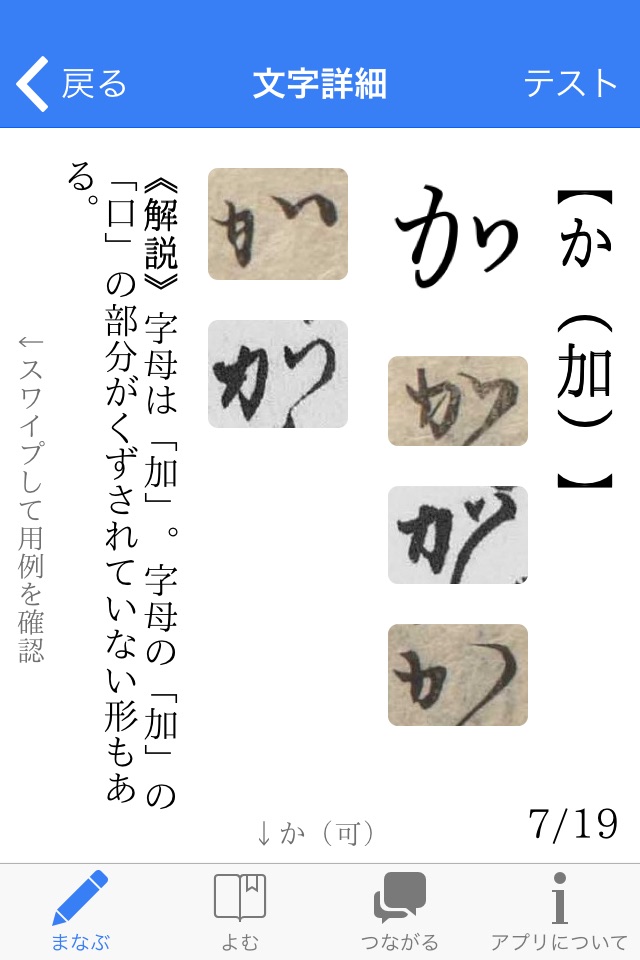
くずし字学習支援アプリKuLA app for iPhone and iPad
Developer: Yuta Hashimoto
First release : 17 Feb 2016
App size: 92.31 Mb
Have you ever wanted to read what it says in old Japanese paintings?
How about books that describe swords from the Edo period?
Reading books from the Edo period or earlier requires the ability to read “kuzushiji” – characters written in a style not used today. KuLA, the Kuzushiji Learning Application, was developed to help people learn kuzushiji effectively on a smartphone or tablet.
Using the test and social-media functions in KuLA will make learning difficult characters easy and fun.
KuLA has three main sections:
-Learn
This section is for learning how to read hentaigana (hiragana that are no longer used today) and cursive-style kanji, using over 3000 images of individual characters. Progress can be checked using the review tests.
-Read
Remembering only the characters isn’t enough for reading actual texts.
In this section, kuzushiji can be practiced in context using images taken from books published in the Edo period. This version currently includes Hojoki (An Account of My Hut), Shinpan Nazonazo Sugoroku (New Edition Riddle Sugoroku [an illustrated board game]), and Aramimei Zukushi Koshu (New Sword Inscriptions, Continued).
-Connect
Did you find characters you can’t read? Why not ask other users?!
The Connect section features social-media tools which allow communication with other kuzushiji learners over the internet, such as by posting a question to the message board with attached pictures of difficult characters.
Let’s enter the world of classical Japanese literature and documents with KuLA!
KuLA was primarily developed in the Graduate Faculty of Letters, Osaka University for the research project “Developing an International Educational Program Related to Japanese Classical books” (Project leader: Professor Iikura Yoichi) and was supported by the JSPS KAKENHI Grant-in-Aid for Challenging Exploratory Research (2015).



